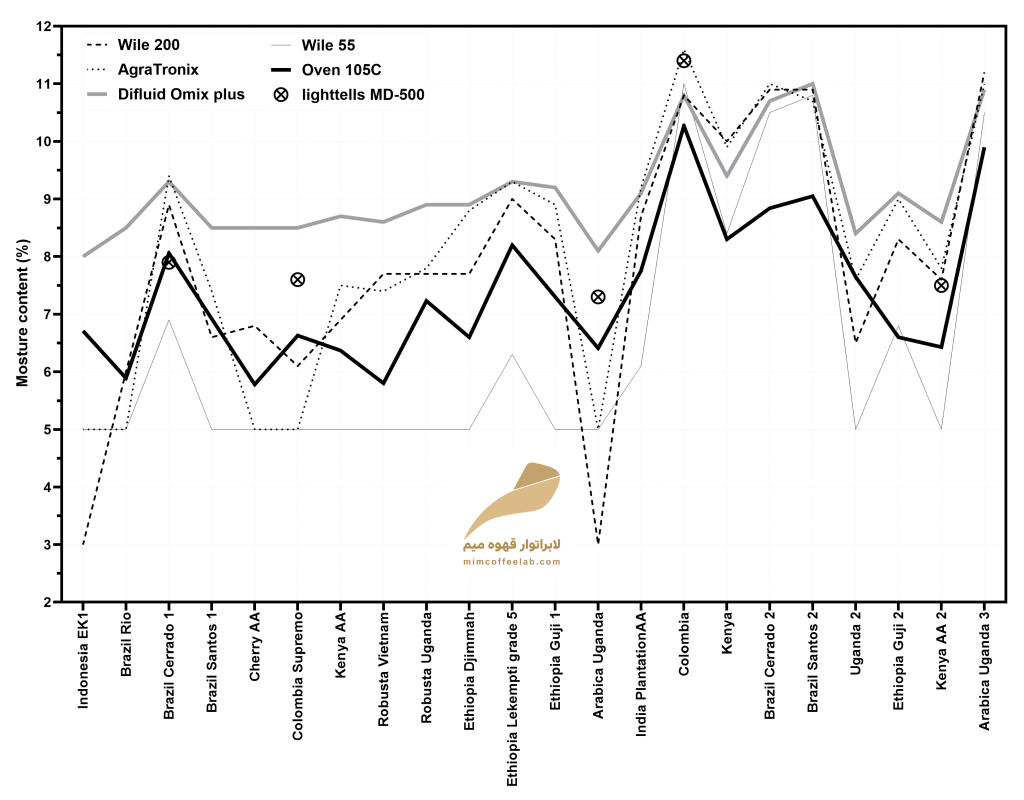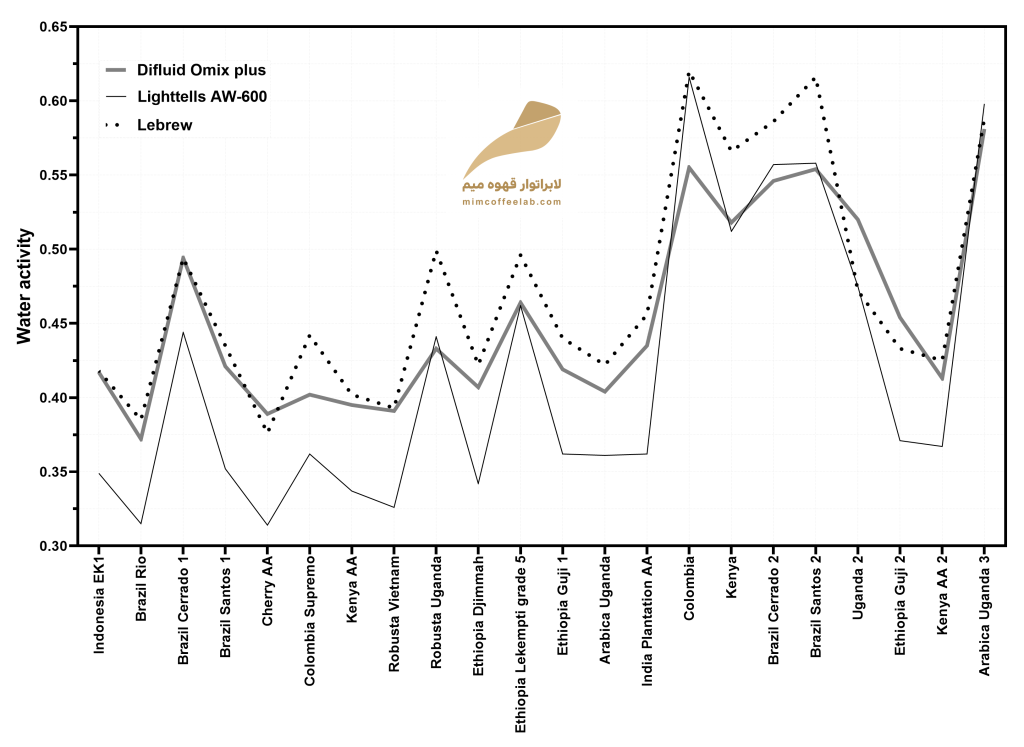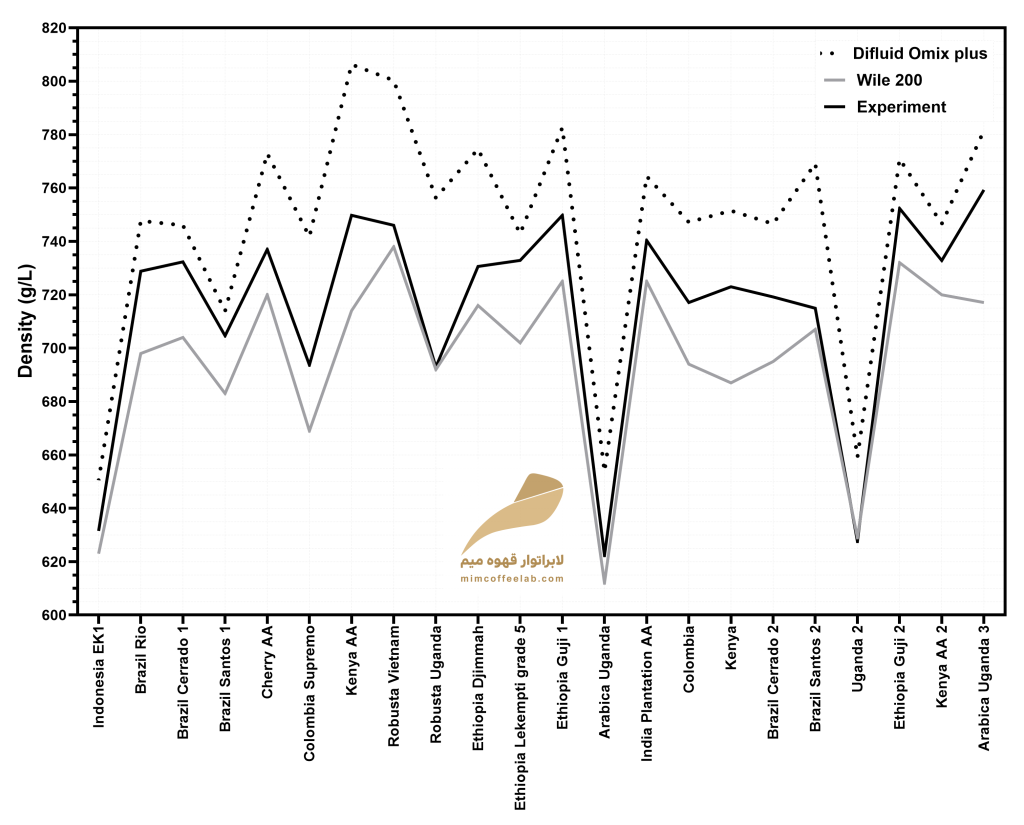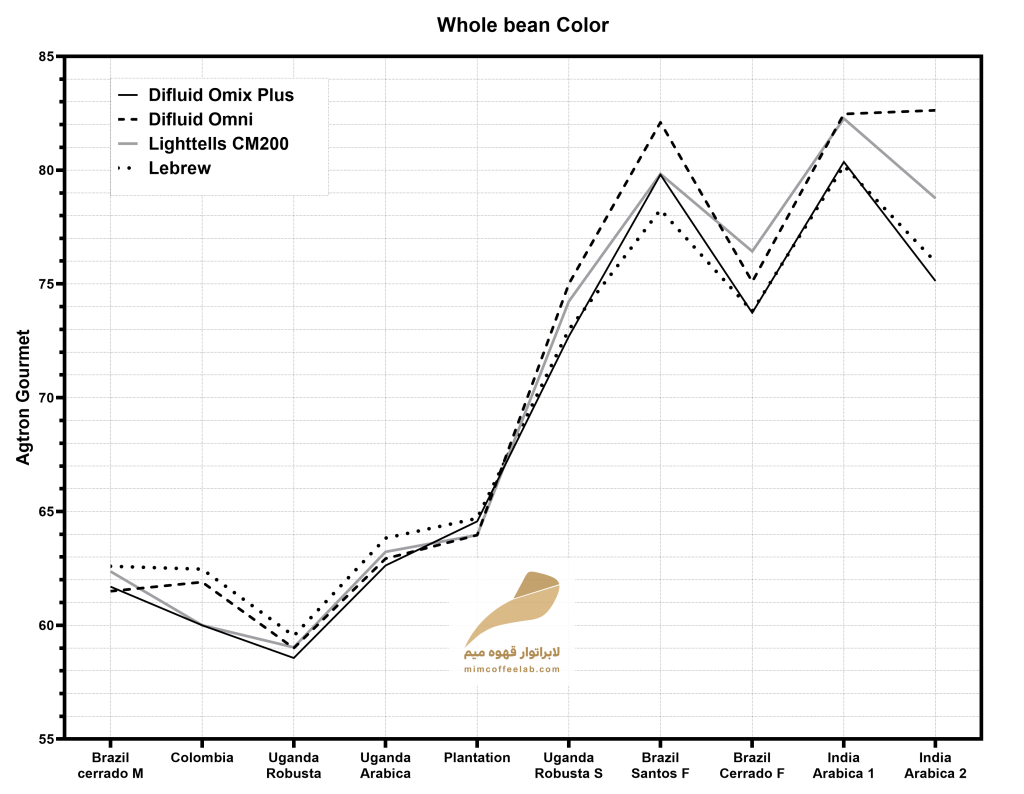Difluid Omix Plus: Performance Evaluation and Market Potential in Iran
Authors: Masoud Naderlou¹, Hesam Mashhadi²
1: Senior Researcher, Mim Coffee Lab (Corresponding Author)
2: Researcher, Mim Coffee Lab
Email Address: [email protected]
Website: www.mimcoffeelab.com
In this study, the performance of the Difluid Omix Plus device in measuring various coffee parameters, including moisture, water activity, density, bean size, and colorimetry, was evaluated. The comparison and analysis were based on data obtained from the Difluid Omix Plus against reference methods (oven method at 105°C for moisture measurement based on ISO 6673, mesh screens, and weight and volume measurement method for density) as well as established devices and brands in the coffee industry. These devices included:
Moisture meters: Wile 200, Wile 55, Agratronix, and Lighttells MD-500
Water activity meters: Lighttells AW-600 and LeBrew RoastSee AquaGauge
Colorimeters: Difluid Omni, Lighttells CM200, and LeBrew
The key results from this comparison are as follows:
Moisture Content
Compared to the reference laboratory method, the Omix Plus device provides acceptable accuracy at moisture levels above 8%, but tends to overestimate at lower moisture levels.
The measurement range of Omix Plus typically lies between 8% and 10.9%.
For moisture levels below 5%, such as in Indonesian or Brazilian coffee samples used in the study, the device overestimates the moisture content, indicating a need for more precise calibration, which, according to the company, will be addressed in a future software update.
Unlike some similar devices, the results obtained by Omix Plus are more stable (lowest standard deviation), making it advantageous for professional use.

Summary: For quick moisture measurement of coffee beans with average to high moisture content, this device is a good choice; however, for samples with Low Moisture content, more accuracy and calibration are required.
Water Activity
The Difluid Omix Plus offers the most accurate technology for measuring water activity compared to other devices, providing data with lower variability.
It uses the Chilled Mirror method, which is considered the most accurate.
The device reported water activity values between 0.372 and 0.581 aw.
It provided the most stable results among the three devices reviewed (standard deviation: 0.0643).
A strong correlation (r above 0.96) with other devices, such as Lighttells and LeBrew, was observed.

Summary: This device is highly suitable for quality control of green coffee beans in roasting facilities, aiming to produce a better product and optimize the storage process.
Density
Compared to the reference method, the Difluid Omix Plus generally reports a slightly higher density, but shows greater sensitivity to variations between samples.
The average recorded density was about 31 grams per liter higher than the reference method.
Unlike the Wile 200, which recorded lower values, Difluid Omix Plus showed higher values for most samples.
A high correlation (r = 0.928) with the reference method suggests that although the absolute value is slightly higher, the trend in variations is reliable.

Summary: The Difluid device performs well for comparing different coffee samples or for stability checks. If precise numerical accuracy is required, correction factors should be used.
Screen Size
Compared to the traditional sieve method, the Omix Plus device provides consistent results and, in some cases, higher accuracy.
The minimum size recorded for some samples was slightly larger than the actual value, but the maximum size was exactly in line with the reference method (Coffee Grading Screen).
Average recorded sizes: 16.18 for minimum and 18.18 for maximum bean sizes.
It demonstrated lower standard deviation than manual methods and provided more uniform results.

Summary: For professional applications requiring fast and accurate bean size measurements, the Difluid Omix Plus is a suitable option.
Colorimetry (Agtron Gourmet Scale)
The Difluid Omix Plus performs consistently compared to other colorimeters and provides higher accuracy for dark roast beans.
It uses near-infrared (NIR) reflectance technology.
Data dispersion is uniform, with a moderate standard deviation (8.31), which is lower than both the Lighttells CM200 and Difluid Omni.
For lighter beans, the sensor is less sensitive, and if the focus is on lighter coffees, the Difluid Omni might be a better choice.
A very high correlation (above 0.99) with other devices indicates that differences between results are practically negligible.

Summary: For assessing roast levels, especially in dark roasts, this device can be an accurate tool for quality control.
Final Summary
| Parameter | Difluid Omix Plus Performance | Key Notes |
| Moisture | Accurate for values above 8% | Requires calibration for very low moisture levels |
| Water Activity | The most precise method available | Offers the most stable results among tested devices |
| Density | Slightly higher than actual values | Highly sensitive to sample differences; suitable for comparative analysis |
| Screen Size | High accuracy, consistent with sieve method | Suitable for fast industrial applications |
| Agtron Color | Highly accurate, especially for dark roasts | Strong correlation with other leading devices |
Overall, the Difluid Omix Plus can be introduced as a versatile, fast, accurate, and reliable tool for professional coffee environments. However, for certain parameters such as very low moisture content or density measurements, understanding the device’s specific behavior and applying correction factors can enhance its performance. This device effectively meets the needs of baristas, roasters, and quality control specialists.

Share It